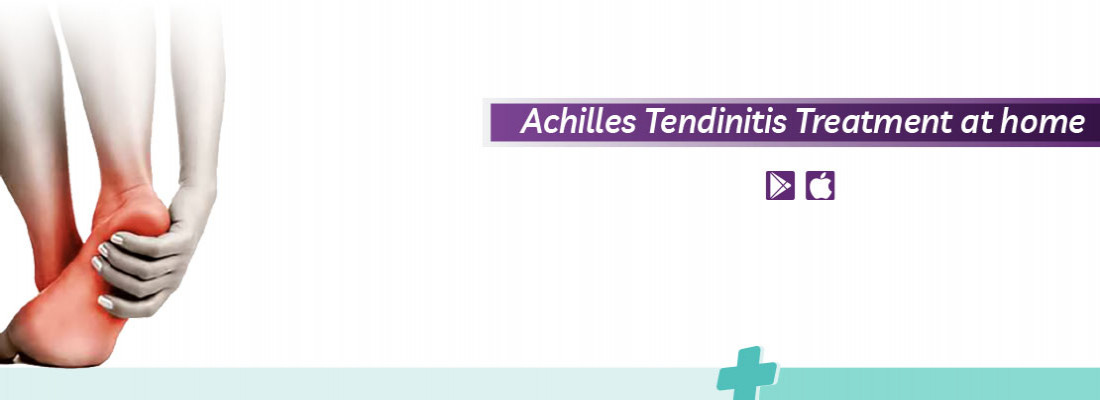
Overview
Medically reviewed by Dr. Md Sazzadul Huque
What is the Achilles Tendon Rupture?
The only weakness of the otherwise eponymous hero of Greek mythology Achilles was that he had a defective heel. The condition “Achilles tendon rupture” gets its name from the Greek hero. This is a condition where the tendon at the back of the heel snaps, leading to excruciating pain. It ill disposes a person to perform regular motor activities like walking and running. It mostly affects athletes. But it can also affect people who are not into sports. Treatment majorly includes surgical and non-surgical intervention. In most cases, a person recovers from Achilles tendon rupture without the need of surgery.
If you are one who has receive a rupture in the Achilles tendon, your feet will be bound with a cast for several days and you won’t be able to move your feet, till you are completely healed. Certain preventive measures that one must follow who has already received a sprain in the heel include stretching before exercising, running on a flat surface, combining intense exercises with lighter ones and gradually increasing the pace of workout regimes.
How is the Achilles Tendon Rupture treatment done?
The treatment is preceded by diagnosis where the doctor will be able to detect whether you have received Achilles tendon rupture or not. He/she will be able to find that out by pressing your ankle and if it does not flex naturally, it would mean that your tendon is ruptured. You might also have to undergo an imaging test, like an MRI scan before your condition is detected.
If the patient undergoing treatment is a young candidate, then surgery is a better option because it allows quick recovery. However, for older patients non-surgical treatment is recommended. After a tendon rupture, a cast, or a walking boot is given to the patient that he/she has to wear for a few months. He/she might also have to use the support of crutches while walking. The ultimate aim of the treatment is to prevent the movement of the affected area. The person has to rest and ice can be applied to relieve the pain. Upon the advice of the doctor, the patient can also take pain-relievers to reduce the intensity of pain.
Surgery involves the sewing up of the tendons that have been ruptured. However, surgery can lead to the development of other complications.
Who is eligible for the treatment?
If upon diagnosis it is found that the muscle around the heel is not flexing naturally, it would mean that the patient has received a Achilles tendon rupture, and the follow up treatment will begin.
Who is not eligible for the treatment?
An older candidate might not be eligible for a surgery, which is one of the interventional methods to treat Achilles tendon rupture. In that case he/she would have to undergo nonsurgical treatments.
Are there any side effects?
There are no side effects of treatment for Achilles tendon rupture until and unless a surgery is performed. The major risk of a surgery is that it can lead to an infection or nerve damage.
What are the post-treatment guidelines?
After you have recovered from ruptured tendon, you will have to follow a rehabilitation program where a physiotherapist will help you to regain proper functioning of the leg. You might have to perform some exercises on a daily basis that would strengthen your muscles.
If you are an athlete you might have to follow some exercise routine or therapy that aims at consolidating the proper functions of all the body parts.
How long does it take to recover?
It takes 4 to 6 months for the tendons to heal. In some cases it can also take almost a year. In the case of a surgery, the recovery time is lesser, but the risks are higher.
Are the results of the treatment permanent?
The condition can recur in a person who has undergone a surgery. And in order to render the treatment successful one should follow preventive measures. For example exercising should be preceded by warm up routines, the person should not run on uneven surface, intense exercises should be combined with light exercises.
What are the alternatives to the treatment?
The best home remedy that one can adopt to reduce the pain of tendon rupture is cold compress. Here a person should apply a pack of ice on the affected area for at least 15 minutes. And the routine should be carried out every 3 hours. The patient can also perform stretching exercises.
Key Highlights
Safety: High
Effectiveness: High
Timeliness: Medium
Relative risk: Low
Side Effects: Low
Time for Recovery: Medium
Price Range: Tk. 500 - Tk. 20000
